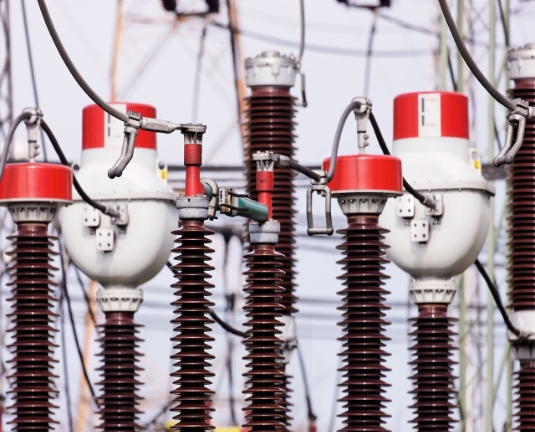What Equipment is Used in Electricity Transmission?
Sep 25, 2024Electricity transmission plays a critical role in ensuring that power generated at plants is delivered to homes, industries, and businesses efficiently and safely. Power transmission involves moving electricity over long distances, typically through high-voltage power lines. However, this process requires a range of specialized equipment to ensure that electricity is transmitted with minimal losses and remains stable throughout the grid.
This article explores the key equipment used in electricity transmission, explaining how each component plays a vital role in the safe and efficient delivery of electrical energy.
Power transmission equipment refers to the various devices and systems that help move electrical energy from generation facilities to substations and ultimately to end users. This equipment must handle high voltages and currents, maintaining electrical stability across vast distances while protecting both infrastructure and consumers.
The equipment used in the transmission of electricity is specifically designed to ensure efficiency, reduce energy losses, and maintain the integrity of the electrical grid. Let’s take a closer look at some of the most important components involved in this process.

Transformers are perhaps the most crucial piece of equipment in electricity transmission. Their primary function is to step up the voltage generated at power plants for long-distance transmission and then step it down for distribution to homes and businesses.
Without transformers, transmitting electricity over long distances would result in significant energy loss and inefficiencies.
Transmission towers and conductors are the physical infrastructure that carries electrical energy across distances. These components are essential for the overhead transmission of electricity.
Towers and conductors work together to ensure that electricity is transmitted efficiently across vast geographical areas.
In electricity transmission systems, circuit breakers are critical safety devices. They are designed to automatically interrupt the flow of electricity in the event of a fault, such as an overload or short circuit. Circuit breakers help protect equipment and infrastructure from damage while ensuring that power is safely restored once the issue is resolved.
Circuit breakers are commonly found in both substations and power transmission networks, providing a layer of protection for high-voltage equipment.
Insulators play a vital role in preventing electrical energy from escaping transmission lines or coming into contact with support structures. Made from materials like porcelain, glass, or polymer, insulators are used to keep conductors separated from transmission towers and other components.
By maintaining proper insulation, these components help prevent dangerous electrical discharges and ensure the safety and efficiency of the transmission system.
Substations are facilities located along the transmission route that act as transition points between different voltage levels. They house equipment like transformers, circuit breakers, and voltage regulators.
Substations are the hubs of the power transmission system, managing the flow and regulation of electricity.
As electricity travels over long distances, voltage can fluctuate due to resistance in the wires. Voltage regulators are devices that help maintain a consistent voltage level throughout the transmission network, ensuring that electricity reaches its destination safely and efficiently.
By stabilizing voltage levels, these devices play a crucial role in minimizing power outages and ensuring the reliable operation of electrical grids.
In high-voltage power transmission systems, capacitors and reactors are used to improve the overall efficiency and stability of the grid.
Both capacitors and reactors are essential in maintaining grid stability and ensuring that electricity is transmitted without disruption.
Power transmission is a complex process that requires a variety of specialized equipment to ensure the safe and efficient delivery of electricity. From transformers and circuit breakers to substations and voltage regulators, each component plays a vital role in maintaining the stability and reliability of the grid.
For industries that require robust power transmission solutions, it is essential to work with experienced suppliers. At Dysen Industrial, we provide high-quality power transmission equipment designed to meet the rigorous demands of modern industrial operations. Explore our product range to find the best solutions for your business.